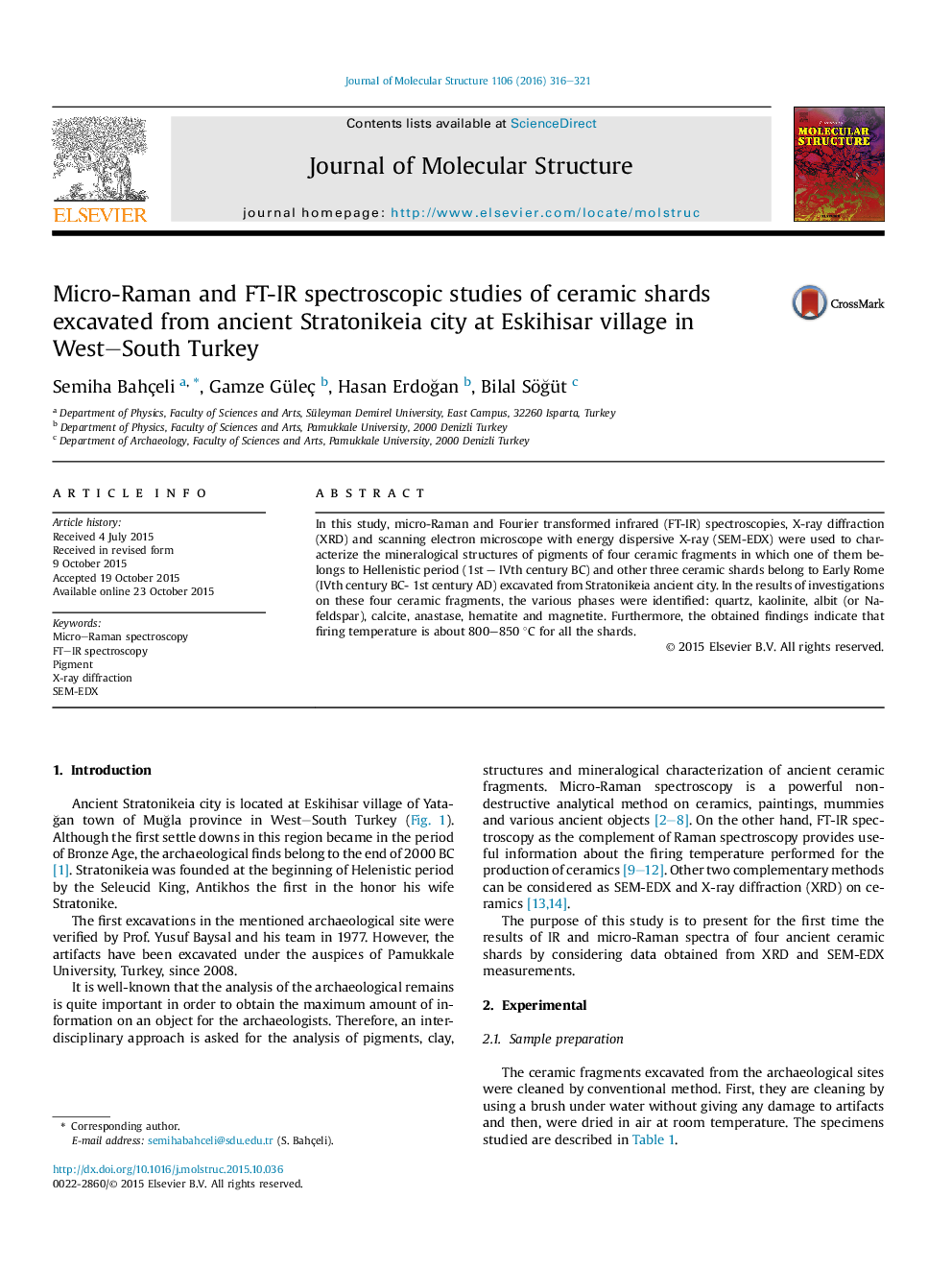| Article ID | Journal | Published Year | Pages | File Type |
|---|---|---|---|---|
| 1401561 | Journal of Molecular Structure | 2016 | 6 Pages |
•The characterization of Hellenistic period (1st – IV th century BC) and Early Rome (IV th century BC – 1st century AD) period ceramic shards excavated from Stratonikeia ancient in West–South Turkey.•The micro-Raman FT-IR spectroscopies, XRD and SEM-EDX techniques are useful tools for the investigation.•The firing temperatures of the ceramic shards are suggested by using the infrared results supported with other techniques.
In this study, micro-Raman and Fourier transformed infrared (FT-IR) spectroscopies, X-ray diffraction (XRD) and scanning electron microscope with energy dispersive X-ray (SEM-EDX) were used to characterize the mineralogical structures of pigments of four ceramic fragments in which one of them belongs to Hellenistic period (1st – IVth century BC) and other three ceramic shards belong to Early Rome (IVth century BC- 1st century AD) excavated from Stratonikeia ancient city. In the results of investigations on these four ceramic fragments, the various phases were identified: quartz, kaolinite, albit (or Na-feldspar), calcite, anastase, hematite and magnetite. Furthermore, the obtained findings indicate that firing temperature is about 800–850 °C for all the shards.
Graphical abstractFigure optionsDownload full-size imageDownload as PowerPoint slide
